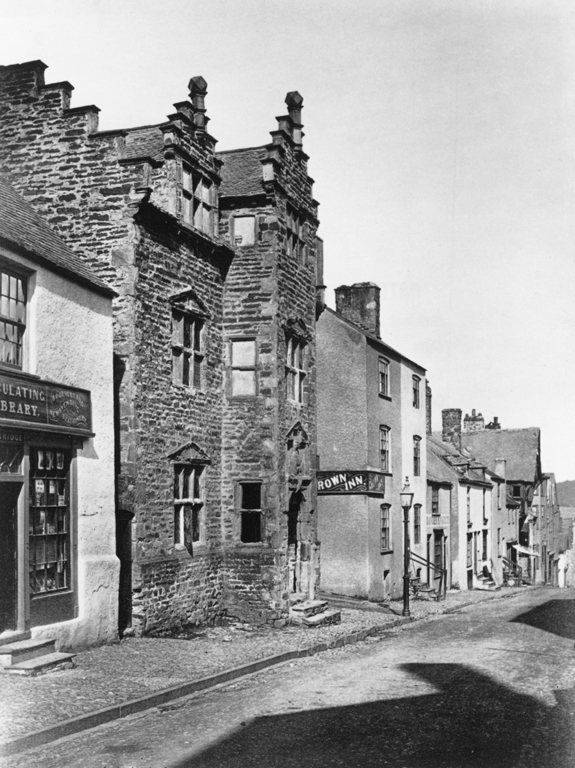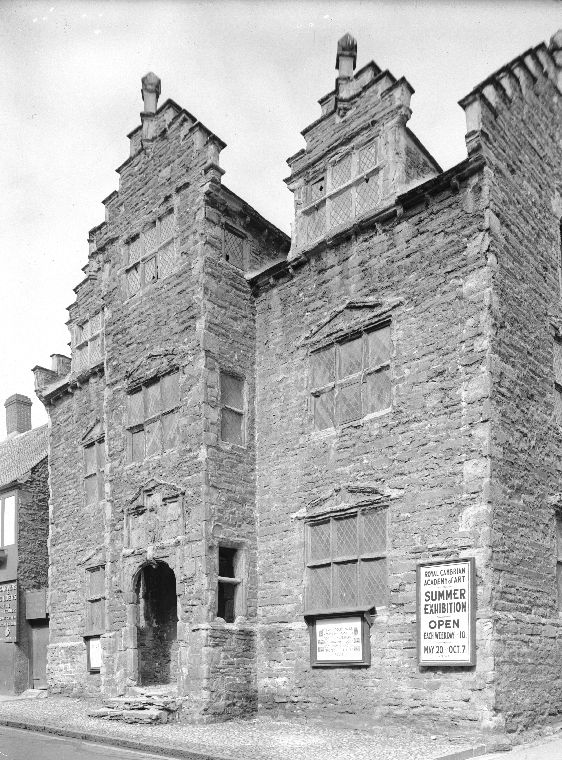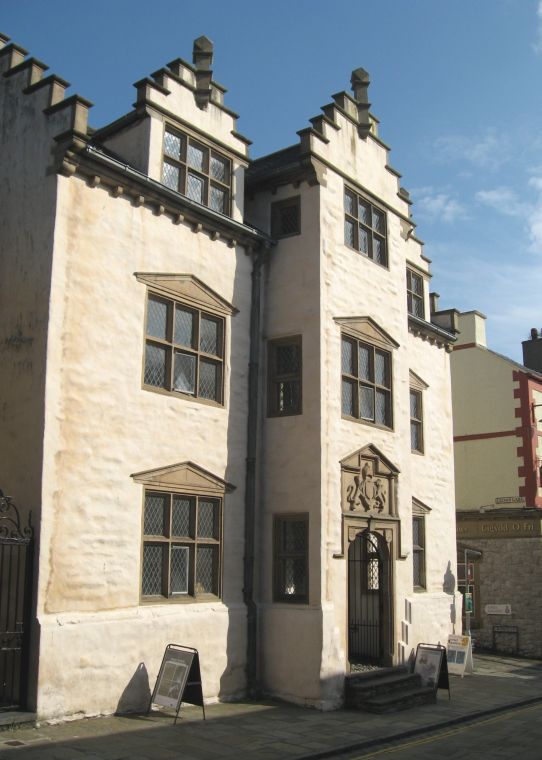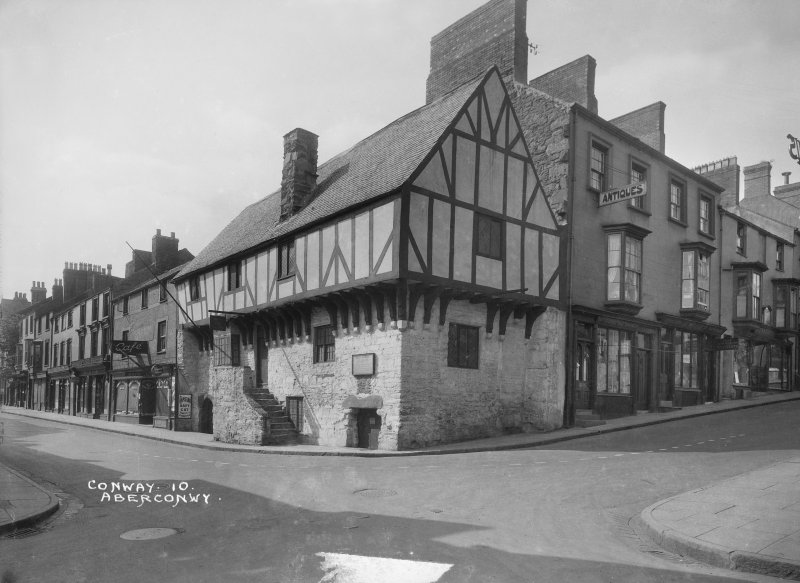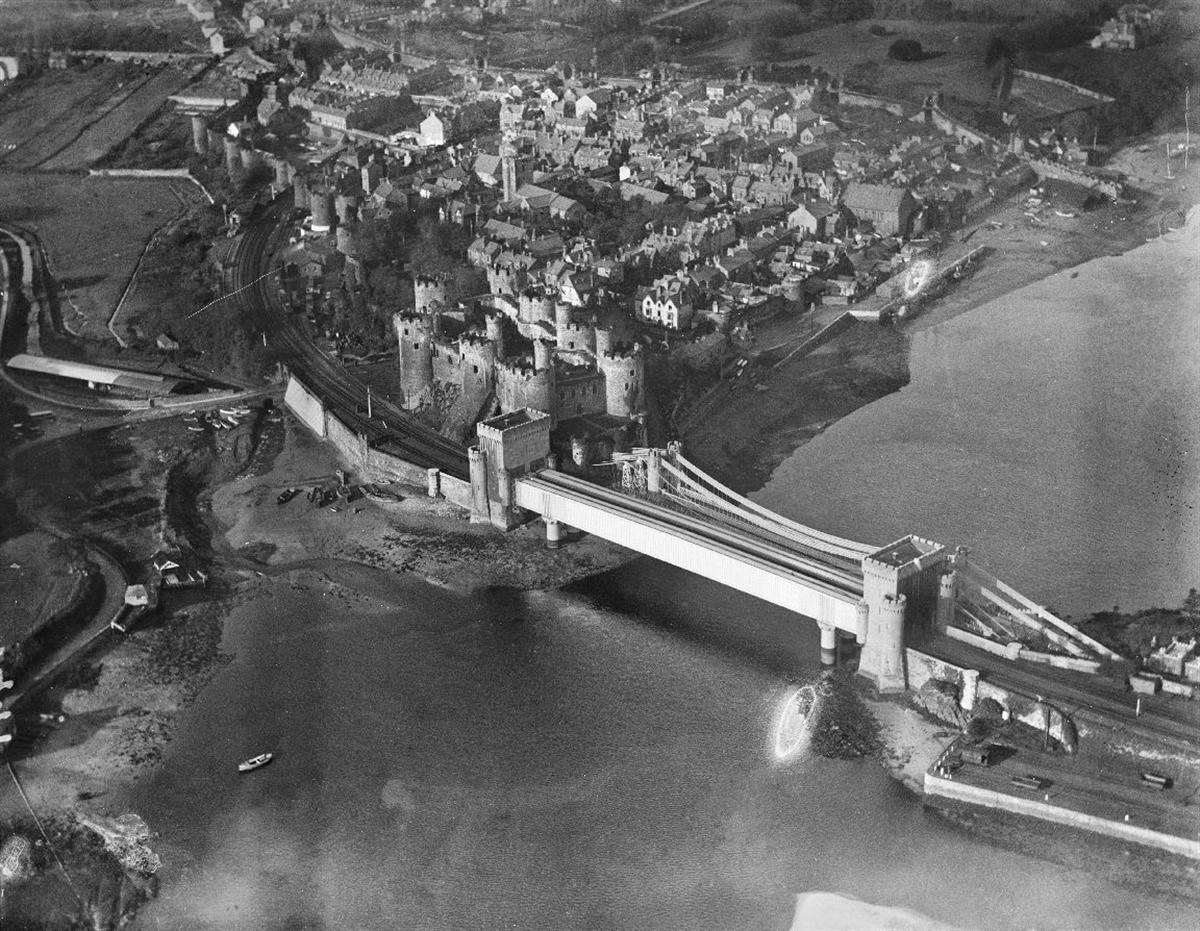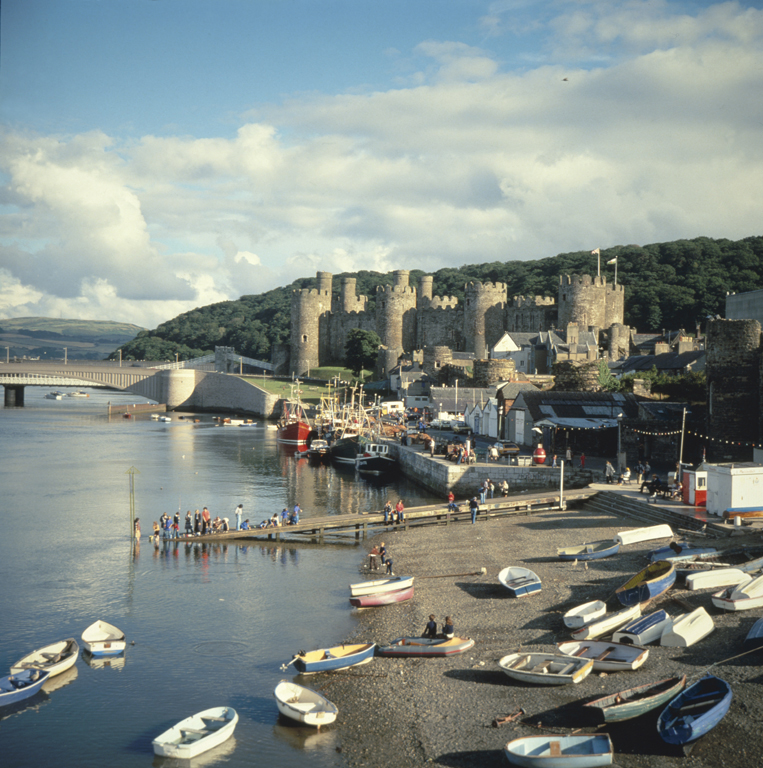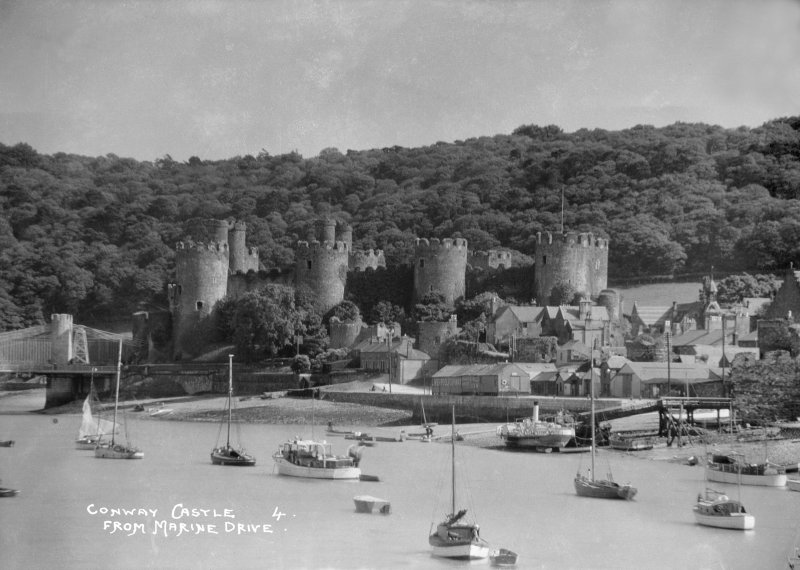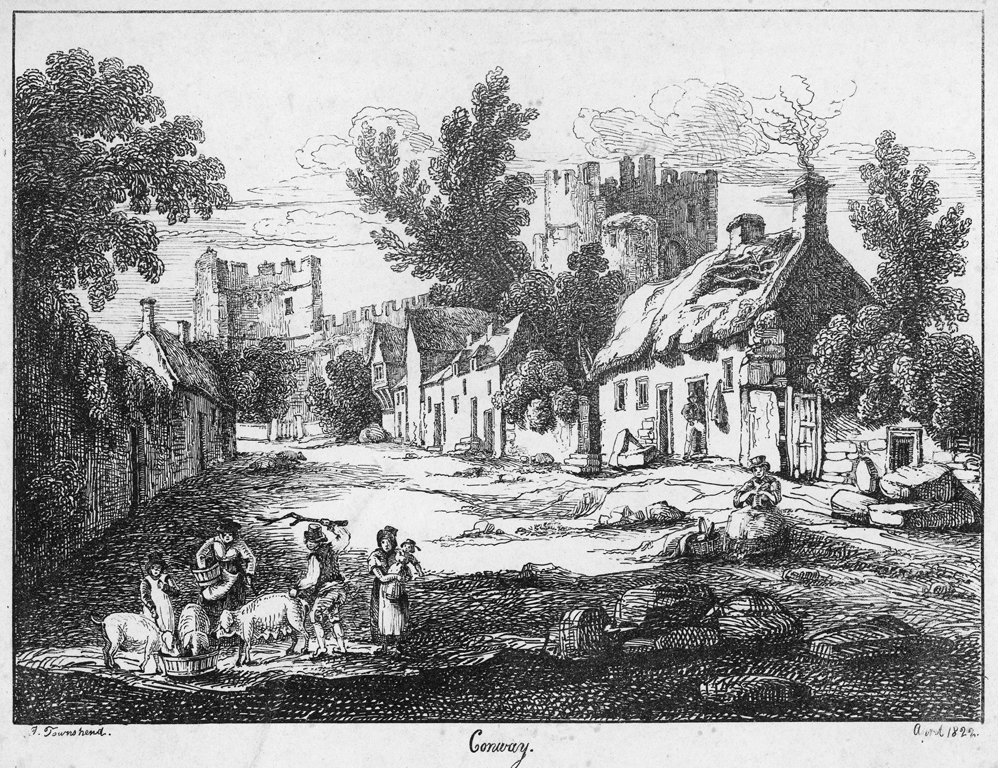Conwy - Overview
This popular medieval walled town was originally the site of the Cistercian abbey of Aberconwy founded by Llywelyn ap Iorweth in 1199. In 1284, following his conquest of Wales in the English king Edward I established Conwy Castle and its associated walled town and the abbey became the Church of St Mary, the monks moving into a new site at Maenan in the Conwy valley. Five centuries later, the German Prince Herman von Pückler-Muskau visited the church and was amused by the gravestone inscription for Nicholas Hookes who was his father’s forty-first child and had twenty-seven children himself. Under Edward I’s rule, the town was settled by English merchants and craftsmen largely from Cheshire and Lancashire.
Dating from the fifteenth century, Aberconwy House is the only surviving example of the typical merchant houses built within the city walls. In 1401, two of Owain Glyndŵr’s cousins infiltrated the town and held it under siege for four months. During the occupation, they managed to destroy the bridges and gates along the town walls.
During the Tudor period, more Welsh families settled inside the city walls. Among them were the rich merchant Robert Wynn and his family. Over the course of three construction periods between 1576 and 1585 he built his great townhouse, Plas Mawr. Although it ceased to be used as a family house by the late seventeenth century, the building remained largely intact. For a time, Plas Mawr served as sublet tenement, as a girls’ school and, by the 1880s, as the home of the Royal Academy of Art. When the adventuress and travel writer Sophie Döhner, from Hamburg, visited the exhibition rooms, she was full of praise for the quality of modern Welsh painting as well as the long history attached to the building.
Accounts of Travel
"Aus dem Berglande von Wales", c. 1900
Sophie Döhner (1844 – 1933)
Unvergessliche Stunden verlebte ich später in dem nahen Conway, dessen malerische Schloßruine mit der großen Zugbrücke über den Meeresarm mich bei der ersten Vorbeifahrt schon gelockt hatte. Conway selbst ist ein altertümliches Städtchen, das noch ganz von mittelalterlichen Mauern mit festen Rundtürmen umgeben ist, auch besitzt es einen alten Palast aus der Zeit Elisabeths ..., der noch völlig in alter Weise erhalten ist. Der jetzige Besitzer dieses Plas Ma[w]r (Großer Platz) hat ihn der königl. Cambrischen Akademie der schönen Künste verpachtet, die gerade eine Gemäldeausstellung in den alten Räumen veranstaltet hatte, welche viel Gutes enthielt. Das Interessanteste war aber natürlich der alte Palast selber mit seinen großen Kaminen, kleinen in Blei gefaßten Butzenscheiben, Eichenpaneelen, alten Möbeln und den Stuckornamenten, die überall Wände und Decken überziehen in geometrischen Figuren, zwischen denen die Wappenschilder, Wappentiere und Namenszeichen der Erbauer und Besitzer sich befinden. So hauptsächlich die des Robert Wynne, der 1577 den Palast erbaute, später eines Robert G[w]yder .... Früher waren diese Ornamente bemalt und vergoldet, jetzt sind sie nur weiß getüncht. Auch die Königin Viktoria hat das Haus betreten durch das Eingangstor mit dem lateinischen Spruch: Sustine et abstine, Leide und meide, und Carmen Sylva hat in der schönen Empfangshalle einmal Tee getrunken.
Later I spent some unforgettable hours in nearby Conwy, whose picturesque castle ruins and large drawbridge across the estuary tempted me already on my first passing. Conwy proper is a small, ancient town which is still completely enclosed by medieval walls and fortified round towers. The town also holds an old Elizabethan palace ... whose ancient features have been preserved perfectly. The current owner of this Plas Mawr (Great Place) has leased it to the Royal Cambrian Academy of Art which just held an exhibition of paintings in the old rooms, showing many fine works. The most interesting part, however, was the old palace itself with its large fireplaces, leaded crown glass windows, oak panels, old furniture and stucco ornaments covering all walls and ceilings. Among their geometrical shapes, the coats of arms, heraldic animals and initials of its previous builders and owners are situated. Prominently among them are the ones belonging to Robert Wynn, who built the palace in 1577, and those of the later Robert of Gwydir .... In former times, these ornaments were painted and gilded, but now they are merely whitewashed. Even Queen Victoria visited the house, entering the premises through the main gate with its Latin motto ‘Sustine et abstine’ (Suffer and abstain), and Carmen Sylva took her tea once in the beautiful foyer.
Briefe eines Verstorbenen, 1828
Hermann von Pückler-Muskau (1785 – 1871)
Nach einer Stunde erreichte ich Conway, dessen Lage eine der reizendsten ist. Hier befindet sich das größte jener festen Schlosser, die alle Eduard gebaut und Cromwell zerstört bat. Es ist zugleich das, welches durch Umgebung wie eigne Schönheit, am romantischsten erscheint.
Die Umfangsmauern, obwohl verfallen, stehen noch sämmtlich, mit allen ihren Thürmen, deren man bis 52 zählt. Die ganze neuere Stadt, ein seltsames aber nicht unmalerisches Gemisch von Altem und Neuem, findet Platz im Bezirk dieser Mauern. Seit Kurzem hat man über den Fluß Conway, an dessen Felsenufern das Schloß steht, eine Kettenbrücke, mit Pfeilern in Gestalt gothischer Thürme, gebaut, die das Grandiose und Fremde des Anblicks noch vermehrt. Die Umgegend ist herrlich, bewaldete Berge stehen den Ruinen gegenüber, und noch höhere ragen über sie hervor. Mehrere Landhäuser zieren die Abhänge, unter andern eine allerliebste Villa, die eben zum Verkauf ausgeboten ist, und den verführerischen Namen „Zufriedenheit“ (Contentment) führt. ... Auch in der Stadt befinden sich sehr merkwürdige alte Gebäude, mit wunderbaren, phantastischen Holzhieroglyphen. Das eine dieser Häuser wurde, wie ein Grabstein in der Kirche besagt, von einem gewissen Hookes im 14ten Jahrhundert erbaut, welcher der ein und vierzigste Sohn seines Vaters war, in der Christenheit ein seltnes Beispiel! Ein großes Winkelkind, von einem Storche getragen, und in altem Eichenbolz geschnitzt, war daher auch so oft wie möglich als Zierrath auf den Wänden angebracht. In gastronomischer Hinsicht ist Conway ebenfalls preiswürdig. Es giebt hier einen Fisch, dessen eben so zartes, als festes Fleisch äußerst wohlschmeckend ist. Er heißt Place (Platz) ein recht passender Name, als rief er: Platz für mich, der besser ist als ihr übrigen! Auch wünschte ich ihm öfter den Ehrenplatz an meinem Tische einräumen zu können. – Noch bei guter Zeit verließ ich Conway, über die Kettenbrücke fahrend, der das zerstörte Schloß zum ehrwürdigen Stützpunkte dient. Die ungeheuren Ketten verlieren sich so abentheuerlich in den felsenfesten Thürmen, daß man das Neue kaum bemerken würde, wenn nicht unglücklicherweise gegen über ein Chausseehaus, ebenfalls in der Form einer diminutiven Burg, aufgebaut worden wäre, das sich wie der Harlekin der großen ausnimmt.
In an hour I reached Conway, whose site is most beautiful. Here stands the largest of those strong castles which Edward built, and Cromwell demolished. It is likewise the most remarkable for the picturesque beauty both of its position and structure.
The outer walls, though ruinous, are still standing, with all their towers, to the number, it is said, of fifty-two. The whole town, a strange, but not unpicturesque mixture of old and new, is contained within the enclosure of these walls. A chain-bridge, with pillars in the form of Gothic towers, has lately been thrown over the river Conway, on whose banks the castle stands: it increases the grandeur and strangeness of the scene. The surrounding country is magnificent: woody hills rise opposite to the ruins, and behind them appears a yet higher range. Numerous country-houses adorn the sides of the hills; among others a most lovely villa, which is for sale, and bears the seducing name of ‘Contentment’. ...
The town also contains very remarkable old buildings, with strange fantastic devices in wood. One of these houses was built, as a tombstone in the church testifies, in the fourteenth century, by a, man named Hooke, the forty-first son of his father – a rare instance in Christendom. A large child in swaddling-clothes, carried by a stork, was carved in oak, and occurred in various parts of the building. Conway is a laudable place in a gastronomic point of view: it abounds with a fish, the firm yet tender flesh of which is delicious. Its name is Place, as who should say, Place for me, who am the worthiest! And truly I shall always be glad to give him the place of honour at my table.
I quitted Conway early, driving across the chain-bridge, which serves as a most noble ‘point d’appui’ to the ruined castle. The monstrous chains lose themselves so romantically in the solid rock-like towers, that one would scarcely be reminded of their newness, if there were not unluckily a tollhouse on the other side, built exactly in the form of a diminutive castle, and looking like a harlequin apeing the other.
(Tour in England, Ireland, and France, in the Years 1828 & 1829. With Remarks on the Manners and Customs of the Inhabitants, and Anecdotes of Distinguished Public Characters. In a Series of Letters. By a German Prince. Ed. B –. Vol. 1. London: Effingham Wilson, 1832)
L’Angleterre, l’Ecosse, et l’Irlande, 1837
Pierre-Etienne-Denis Saint-Germain-Leduc (1799 – 18??)
La situation de Conway est des plus délicieuse. Là se trouve le plus grand des châteaux bâtis par Édouard et détruits par Cromwell. Ses murs d’enceinte, quoique dégradés, sont encore debout avec toutes leurs tours, qui sont au nombre de trente-deux. La ville neuve tout entière, qui offre un mélange de vieux et de neuf assez bizarre, mais cependant agréable, est contenue dans l’enceinte de ces mêmes murs. Sur la rivière de Conway, au bord de laquelle la ville est assise, on a jeté un pont suspendu dont les piliers ont la forme de tourelles gothiques. On voit encore les restes imposants de l’ancien hall du château avec ses deux énormes cheminées, et des appartements royaux. Dans le cabinet de la reine on admire un prie-Dieu fort bien conservé et richement travaillé, ainsi qu’une forte belle fenêtre cintrée. La ville présente plusieurs anciens édifices très-remarquables, remplis de bizarres sculptures en bois. On apprend d’une pierre tumulaire qui se trouve dans l’église, qu’une de ces maisons a été bâtie dans le quatorzième siècle par le nommé Hookes, qui était le quarante et unième fils de son père, exemple assez rare dans la chrétienté. En conséquence on voit répété dans tous les recoins de la maison un grand enfant au maillot porté par une cigogne, sculpté comme ornement dans la boiserie. Je ne connais pas de pays où la manie du gothique soit poussée si loin. Un cabaret situé sur la route qui conduit à Saint-Asaph était garni de herses, de meurtrières et de créneaux.
The situation of Conway is most delicious. The biggest of the castles build by Edward and destroyed by Cromwell is found here. Its enclosure walls, though deteriorating, are still standing, along with all their towers, which number thirty-two. The whole of the new town, which offers a rather bizarre but pleasant mix of the old and the new, is contained within the enclosure of these same walls. Over the river Conway, on whose banks the town sits, a suspension bridge, with pillars in the form of Gothic turrets, has been built. The impressive remains of the old castle hall with its two enormous fireplaces, and royal apartments, are still to be seen. In the Queen’s solar a well-preserved and richly decorated prie-dieu can be admired, as well as a rather beautiful arched window. The town offers many very remarkable ancient buildings, filled with bizarre wooden carvings. A grave stone in the church informs us that one of these houses was built in the fourteenth century by a man named Hookes, who was his father’s forty-first son, something that is quite rare in Christendom. And consequently there are wooden carvings of a large child in swaddling clothes carried by a stork to be found in every nook and cranny of the house. I know of no country where Gothic-mania has gone so far. An inn on the road to Saint-Asaph has portcullises, loopholes and crenulations for decoration.
Un tour au pays de Galles, c. 1860s
Albert Huet (1822 – 1866)
Quand on est à la pointe de Beaumaris, on aperçoit de l’autre côté de la mer, à l’horizon, les murs crénellés de l’enceinte de Conway. ... Nous voici en wagon, puis dans le tube. Deux minutes après, le bras de mer est ainsi traversé.
En une heure nous sommes à Conway, ville remarquable par son cachet antique, les murailles qui entourent la ville, ses tours et ses vieilles maisons.
On nous avait tant vanté la ville, son port sur la rivière Conway, large d’un demi-mille, que nous avions pris la résolution d’y passer le samedi soir et le dimanche britannique, si difficile à occuper en Angleterre.
Mais le spleen nous prend dès que nous sommes dans Castle hôtel, excellent hôtel cependant, mais privé d’air et de vue, comme toute la ville de Conway. – Les murailles, partout les murailles.
Nous nous raidissons, nous voulons rester.
– Où est, madame l’hôtesse, l’église catholique?
– A Llandudno.
When you are on the tip of Beaumaris, you can just see on the horizon, the other side of the sea, the crenulated walls that enclose Conway. ... Now were are on the train, then in the tube. Two minutes later, the stretch of sea has thus been crossed.
In one hour we are in Conwy, a town noted for its antique style, the walls that surround the town, its towers and old houses.
We had heard so much about the town, its port on the river Conway, half a mile wide, that we decided to stay there on Saturday night and the British Sunday, so difficult to occupy in England.
But we were gripped by spleen as soon as we got to the Castle Hotel, an excellent hotel though, but lacking air and a view, just like the rest of Conwy town. – Wall, walls everywhere.
We braced ourselves, we wanted to stay.
– Where, madame hostess, is the Catholic Church?
– At Llandudno.
